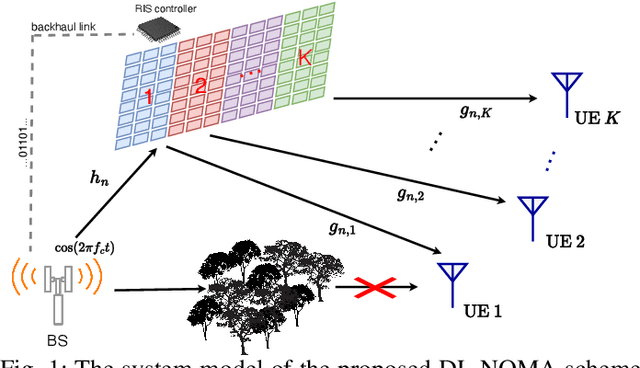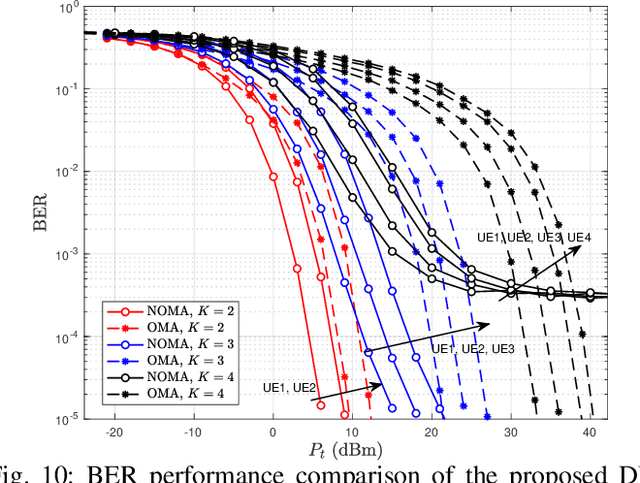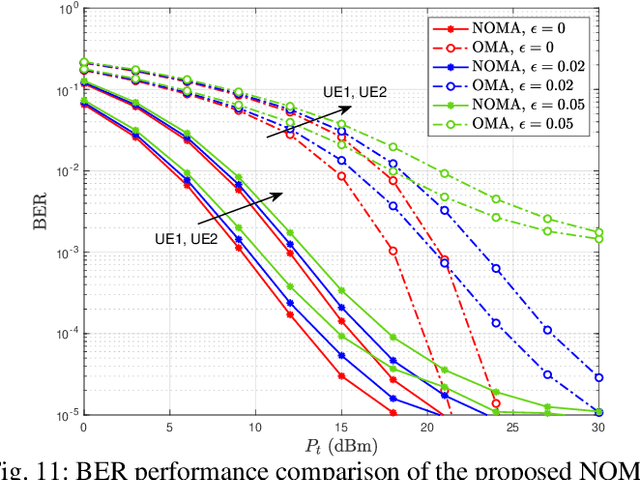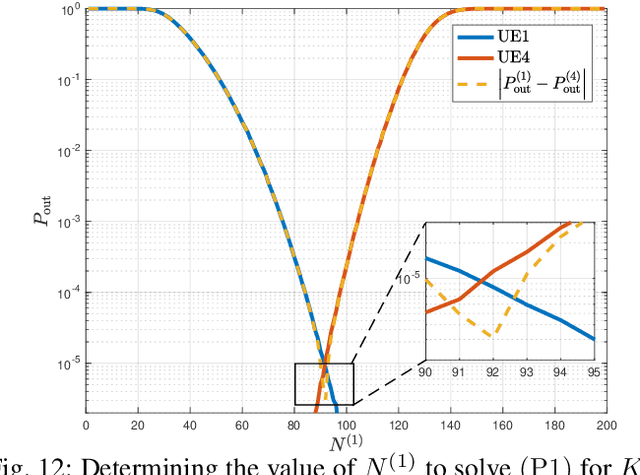Ali Tugberk Dogukan
Hybrid Reconfigurable Intelligent Surface Enabled Over the Air Index Modulation
Jul 12, 2024Abstract:Users' desire for enhanced performance drive the inevitable technological progress on vertical applications in wireless communication systems. To meet these demands, researchers vigorously investigate potential 6G and beyond technologies and solutions. Reconfigurable intelligent surfaces (RISs) have risen in popularity and attracted the attention of academia as well as industry and seem to be a promising candidate for 6G technology. RISs are reflective metamaterials with many configurable elements consisting of pin diodes that have the ability to manipulate the impinging signals' properties, hence, enabling some sort of virtual control over the wireless channel. In this paper, we propose a novel over-the-air index modulation (IM) scheme through the use of a hybrid RIS with active and passive partitions to convey additional IM bits over-the-air. In addition we propose another modified scheme that allows the transmission for even more IM bits but at the expense of certain trade-offs. First, we present the system model for both of the proposed schemes. Furthermore, comprehensive computer simulation results are provided and discussed presenting the superior bit error rate (BER) performance and additional benefits of the proposed systems compared to similar benchmarks.
Reconfigurable Intelligent Surface-Enabled Downlink NOMA
Jan 09, 2024



Abstract:Reconfigurable intelligent surfaces (RISs) bring great potential to the advancement of 6G and beyond wireless communication technologies. RISs introduce a great degree of flexibility, allowing some sort of virtual control over the wireless channel. Exploiting the flexibility introduced by RISs, we propose a novel RIS-enabled downlink (DL) non-orthogonal multiple access (NOMA) scheme where NOMA is enabled over-the-air rather than at the base station (BS) or the receiver (Rx). Here, the RIS is partitioned into distinctive groups where each part of the RIS serves a different user equipment (UE) to perform multiple accessing. The BS transmits an unmodulated signal to the RIS, and each partition modulates the impinging signal over-the-air by introducing a phase shift according to the incoming information bits to serve the corresponding UE. First, the end-to-end system model for the proposed system is presented. Furthermore, outage probability calculations, theoretical error probability analysis, and bit error rate (BER) derivations are discussed and reinforced with comprehensive computer simulation results.
Reconfigurable Intelligent Surface Enabled Over-the-Air Uplink Non-orthogonal Multiple Access
Aug 06, 2022Abstract:Innovative reconfigurable intelligent surface (RIS) technologies are rising and recognized as promising candidates to enhance 6G and beyond wireless communication systems. RISs acquire the ability to manipulate electromagnetic signals, thus, offering a degree of control over the wireless channel and the potential for many more benefits. Furthermore, active RIS designs have recently been introduced to combat the critical double fading problem and other impairments passive RIS designs may possess. In this paper, the potential and flexibility of active RIS technology are exploited for uplink systems to achieve virtual non-orthogonal multiple access (NOMA) through power disparity over-the-air rather than controlling transmit powers at the user side. Specifically, users with identical transmit power, path loss, and distance can communicate with a base station sharing time and frequency resources in a NOMA fashion with the aid of the proposed hybrid RIS system. Here, the RIS is partitioned into active and passive parts and the distinctive partitions serve different users aligning their phases accordingly while introducing a power difference to the users' signals to enable NOMA. First, the end-to-end system model is presented considering two users. Furthermore, outage probability calculations and theoretical error probability analysis are discussed and reinforced with computer simulation results.
 Add to Chrome
Add to Chrome Add to Firefox
Add to Firefox Add to Edge
Add to Edge